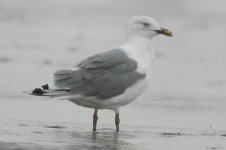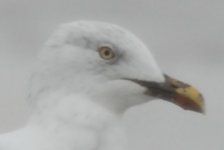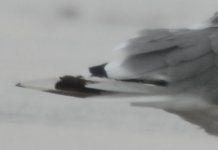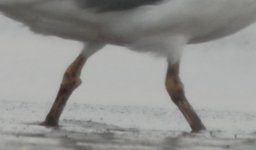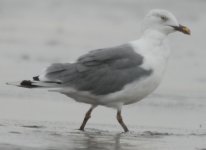pabs
Registered Member
I id'd this bird as a Yellow-legged Gull but a local gull expert thought it was not quite right and wondered about a hybrid. I am not familiar with hybrids. The red eye ring is present but not prominent, the mantle perhaps is a little darker than it should be but it was a very dull day and light was starting to fade. As far as bill and head shape is concerned, I have no idea about separating with these features.
Any opinions welcome,
Paul
www.birdlist.co.uk
Any opinions welcome,
Paul
www.birdlist.co.uk




